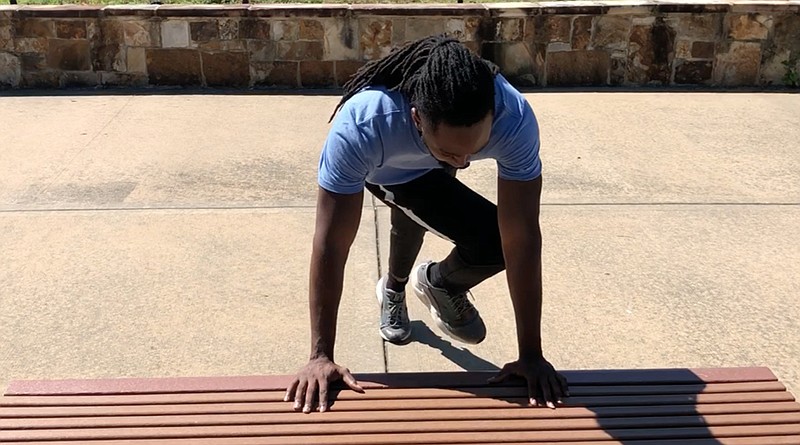With each passing year, I feel a noticeable degradation in my body's ability to recover after a workout.
Soreness lasts a little longer, nagging injuries creep in and my joints feel like ancient door hinges without a drop of oil.
Aging as an active person is tricky, as the line between going the extra mile and self-preservation seems razor thin. This week, I will present a few keys to recognizing where that line lies and how to challenge it safely. I'll share an exercise that is a good barometer for many aging adults.
A few years ago, I turned 40 and thought "it's just a number" because I really hadn't faced any significant physical challenges up to that point. I was still engaged in a tough workout program with weights and cardiovascular exercise four to five days per week. As I sit here four years later, I understand what all the textbooks told me would happen.
My body just is not the same as it once was.
I share this not to seek sympathy or to do some sort of self-therapy. But rather to help others recognize what I have learned over the past four years. It has taken some time, but I have learned how to listen to my body and respect it when a caution sign appears.
The first key is to understand your own health history. Past injuries, body imbalances, tightness or weakness in specific areas all tend to creep back in eventually. So, it's important to acknowledge those areas and when your training engages them, increase intensity in very small increments.
For example, those with a history of lower back trouble should be cautious about increasing resistance levels during a squat exercise. In this case, I might recommend moving up in 5-pound increments to be sure the body has time to adjust.
Assuming one has a solid grasp on weak points, the next step is to document any significant post-workout pain. I call this my little "pain journal," which is simply a notes file within my phone where I record serious pain and what might have caused it. For example, I performed a new TRX exercise last week and subsequently had some pretty severe shoulder pain over the next three days. I wrote down the exercise that I felt caused the discomfort, as well as the body part and the severity of pain (on a 1-10 scale).
This journal is a durable reminder to skip that exercise or develop an alternate movement.
Finally, respect any acute pain during a workout.
If the pain is a dull, achy "burn" ... it's probably just the normal muscle fatigue. But any sharp pain should be respected, and whatever movement is happening should be discontinued. By the way, this advice also applies to cardiovascular training. A sharp pain in the knee during a jog is just as dangerous as a sharp elbow pain during a bench press.
Be aware of acute pain points and discontinue the activity immediately.
With those three rules in place, most people will be ahead of the game. But there's also the rehabilitative piece of the puzzle and understanding when to re-engage after a setback, but I will discuss those in a future column.
This week's exercise is a great option for those who may have had trouble with muscles around the core. Traditional situps often aggravate old neck and/or back problems, but this type of core exercise usually doesn't. The Incline Plank Twist is easy to perform without any equipment needed.
1. Find a park bench or staircase. Place your hands on the elevated surface and leave your feet on the ground. Your body should be inclined at an angle.
2. Tighten your abdominals to get started.
3. Lift your right knee up and to the left toward your left elbow. Allow your hips to twist to facilitate the lateral movement of the knee.
4. Place the right foot back down to the starting position and then perform the same movement with the left knee toward the right elbow.
5. Continue these "marching" knee raises for 15 repetitions, and do two sets.
The Incline Plank Twist is a good core exercise for those who prefer not to lift their head against gravity. I sometimes have discomfort in the situp position, so this is one of my "go-to" core exercises these days. It's a great one, enjoy!
Matt Parrott has a doctorate in education (sport studies) and a master's in kinesiology and is certified by the American College of Sports Medicine.
vballtop@aol.com
